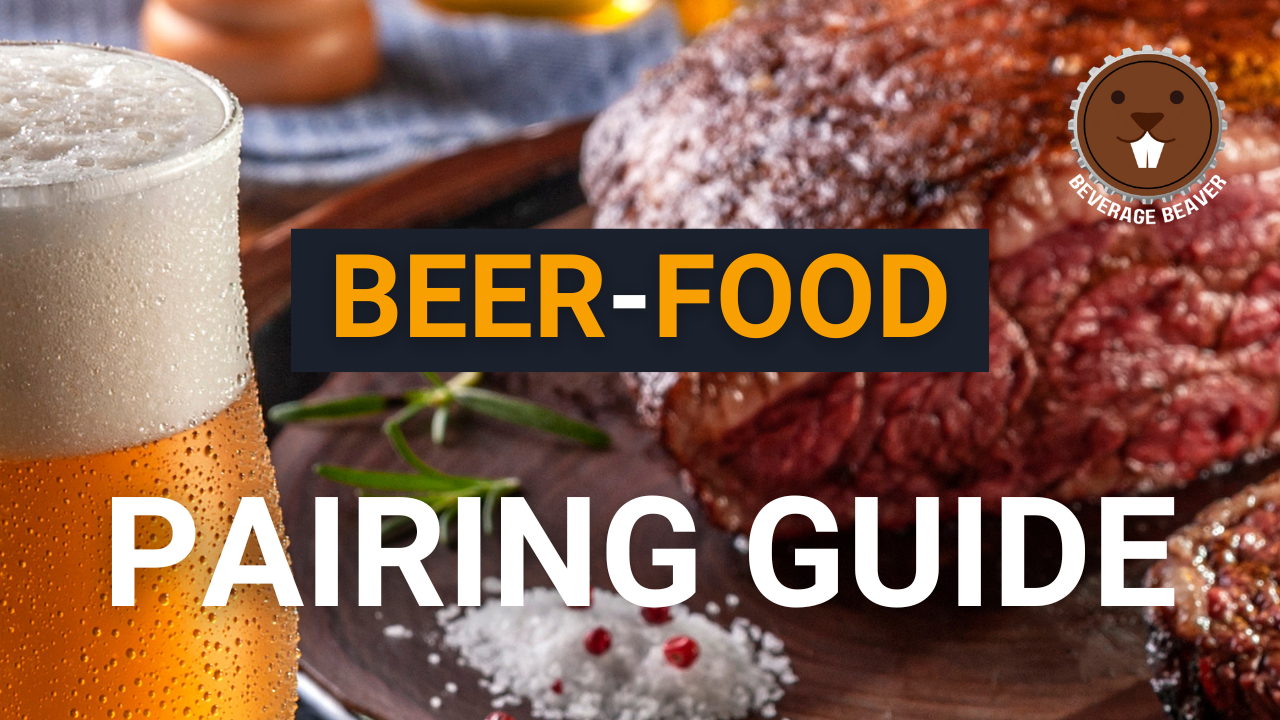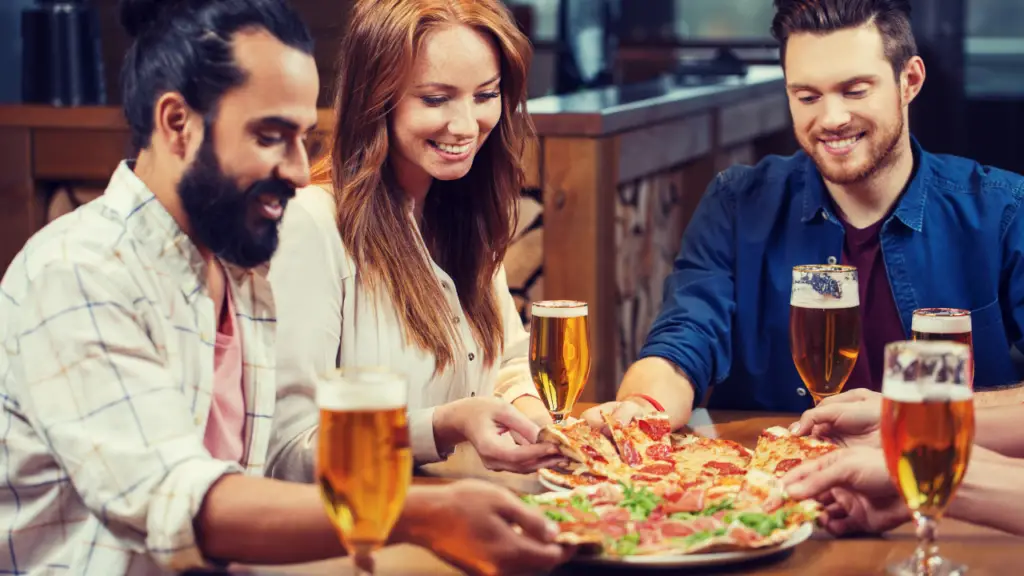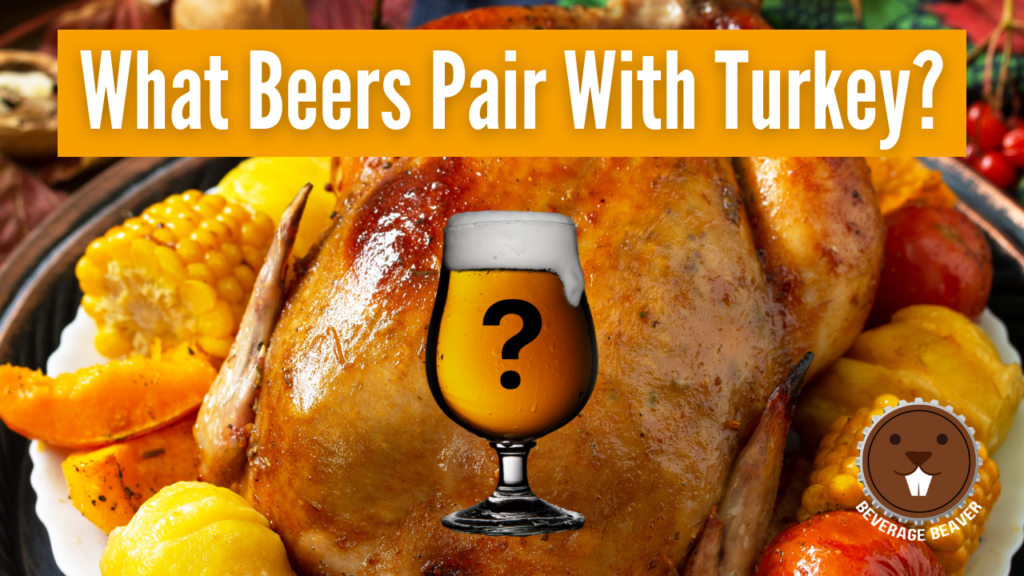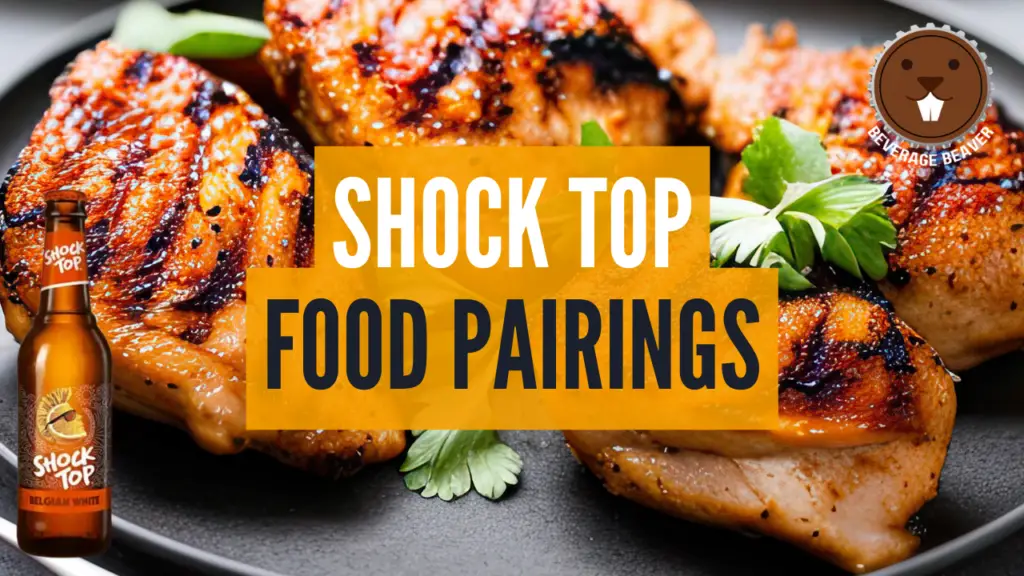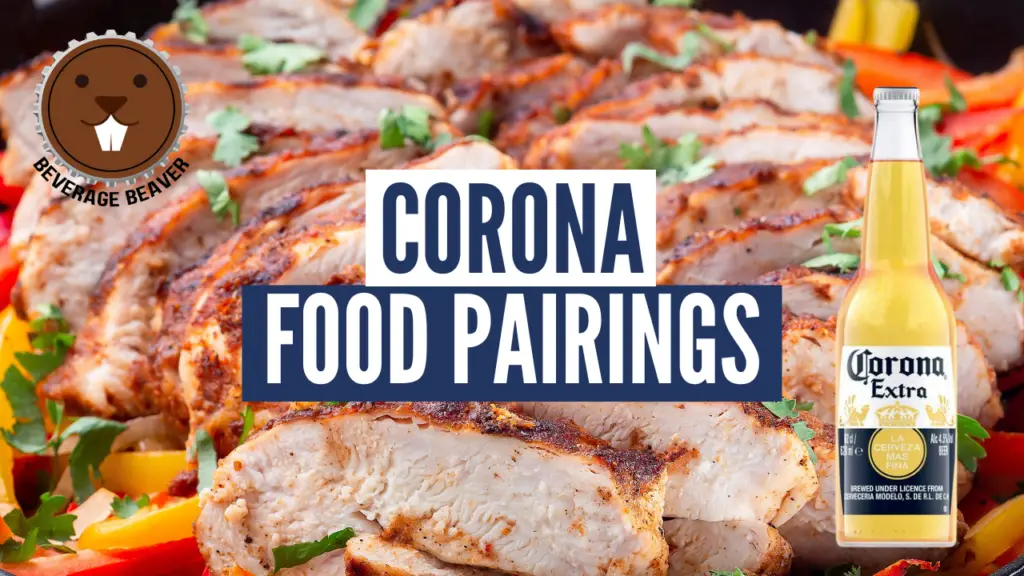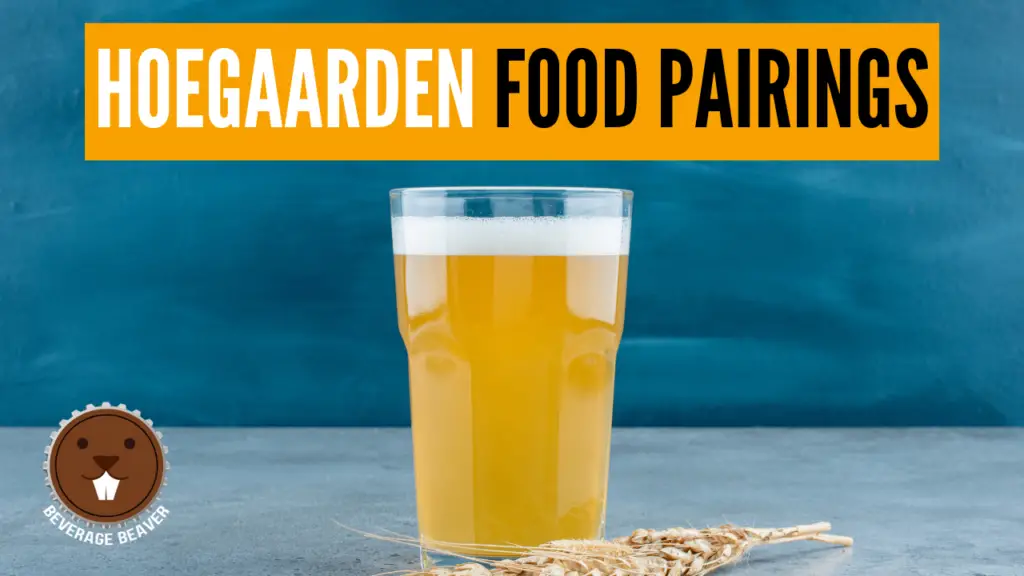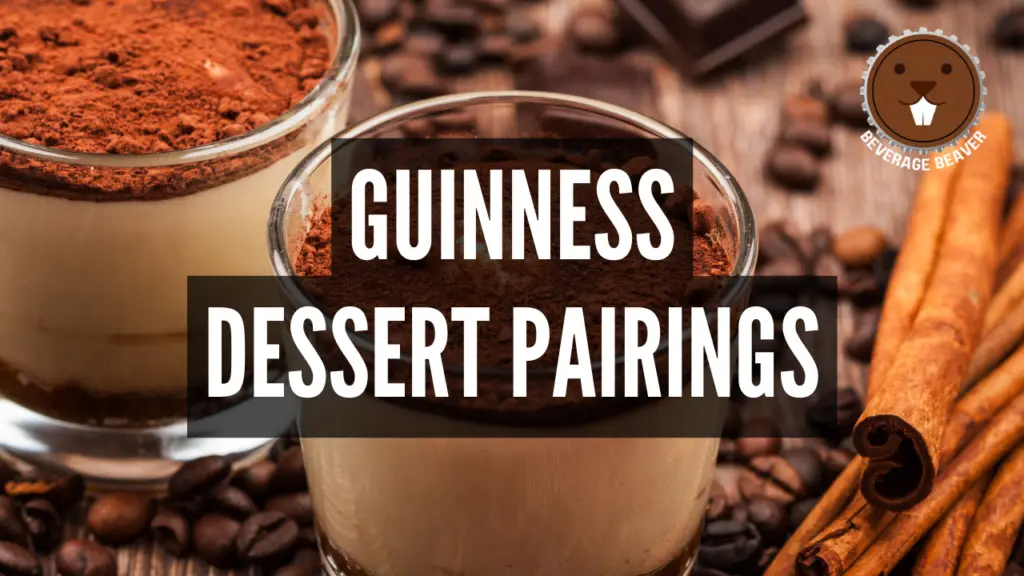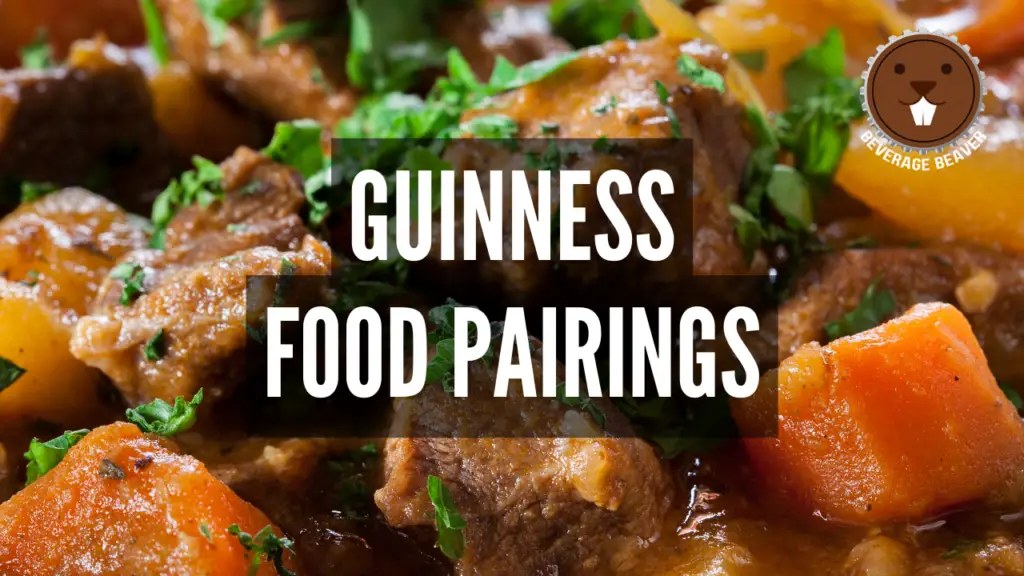An Easy Guide To Beer Food Pairing
Pairing beer with food is much more than just choosing a random beer to go with your meal. The right combination can elevate both the food and the beer to a whole new level, creating a symphony of flavors and textures that you and your dining companions will be eager to try again and again.
In this easy guide to beer food pairing, you will learn the science behind why certain beers and food pair well together, what types of beer pair well with particular foods, and lots of beer food pairing suggestions based on beer style and food type.
Beer Food Pairing: 4 Key Concepts
Before we talk about beer food pairing guidelines, we must first understand some basic concepts such as complementary and contrasting flavors, palate cleansing, and mouthfeel. Let’s look at each of these one by one.
Complementary Flavors
Complementary flavors enhance each other because they share similar flavor compounds. For example, the caramel notes in a brown ale can beautifully complement the caramelized crust of a grilled steak. By understanding and utilizing complementary flavors, you can create beer food pairings that transform a simple meal into a memorable dining experience.
Contrasting Flavors
Contrasting flavors work well together precisely because they are different, and each can balance out the other. A classic example is pairing a hoppy, bitter IPA (Indian Pale Ale) with a spicy dish. The spiciness of the food can cut through the beer’s bitterness, and vice versa, creating a balanced dining experience.
Palate Cleansing
Palate cleansing in beer food pairing refers to the refreshing or neutralizing effect a particular beer has on your taste buds, allowing you to fully appreciate the flavors of the next bite. For instance, the effervescence and slight acidity of a Czech pilsner can cleanse the palate after a bite of rich, fatty cheese, resetting your taste buds for the next flavorful mouthful.
Mouthfeel
Mouthfeel refers to the physical sensations a beer produces in your mouth, such as creaminess, carbonation, or astringency. This experience can greatly influence how a beer interacts with food. For example, a beer with a creamy mouthfeel might soften the spiciness of a dish, while a highly carbonated beer could accentuate crispy textures. Learn more about mouthfeel in beer tasting.
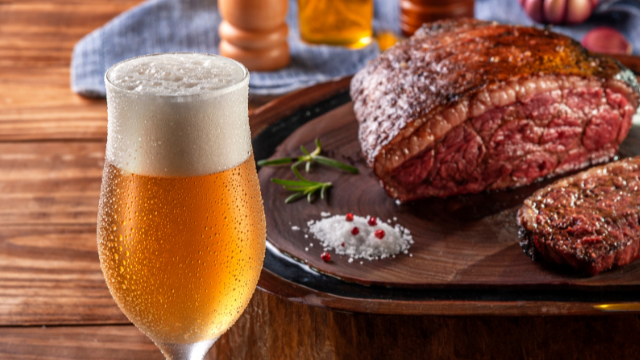
How To Describe Tastes In Beer
If you’re going to understand beer food pairing, then you’ll need to speak the language. From the crispness of a lager to the hoppiness of an IPA, the terms used to describe beer may seem daunting, but they’re actually quite easy to understand. Here are the key terms you need to know to describe the taste of beer:
- Crisp: The term “crisp” in beer often refers to a clean finish with a sharp, refreshing quality. This is commonly found in lagers or lighter ales, where the focus is on a clear, pure yeast profile devoid of fruity or spicy esters. The crispness is usually accentuated by a balanced carbonation level.
- Light: When describing a beer as “light,” it often pertains to both the color and the body. Light beers, such as Miller Lite or Coors Light for example, usually have a pale hue and are lower in alcohol content. They offer subtle, clean flavors, often leaning towards grainy, and may have a slightly sweet or watery finish.
- Dark: Dark beers are characterized by their deep, opaque colors which can range from amber to near-black. They generally feature a rich malt profile, including flavors like caramel, toffee, and even hints of chocolate or coffee. The color is usually an indicator of the kinds of malts used in brewing.
- Bitter: Bitterness in beer is primarily derived from hops but can be influenced by roasted malts. The term often describes the sharp, tangy quality that counterbalances the sweetness of the malt. The International Bitterness Units Scale measures this characteristic, but perception of bitterness can be subjective.
- Hoppy: Many people use “hoppy” to describe how bitter a beer tastes, but hops contribute far more than just bitterness. Depending on when they are added in the brewing process, hops can impart a range of flavors and aromas, from floral and citrusy to earthy and piney.
- Malty: The term “malty” describes beers where the flavors of the grains take center stage. Malty beers can be sweet, but also include a range of flavors like caramel, chocolate, or toasted bread. The malt profile is generally fuller and may contribute to a heavier mouthfeel.
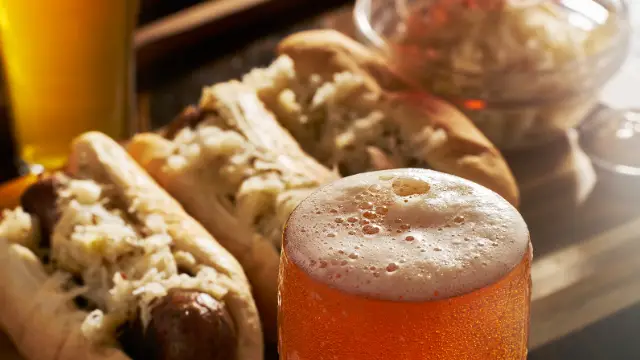
Beer Food Pairing By Beer Styles
In order to make a good pairing, you must understand the different types of beer and their qualities. Before we look at the different beer types in detail, here is a list of the different types of beer and the foods they pair best with.
- Light Lagers: Grilled seafood, zesty salads, light pizzas, spicy Asian dishes, potato-based dishes
- Wheat Beers: Sushi, chicken Caesar salad, soft pretzels, fresh fruit, mild cheeses like Brie or Camembert
- IPAs: Spicy tacos, charcuterie board, strong cheeses like Blue or Gorgonzola, grilled steaks, curry dishes
- Stouts: Beef stew, chocolate cake, blue cheese, BBQ ribs, oysters
- Porters: Grilled steak, mushroom risotto, dark chocolate, smoked sausages, apple pie
- Amber Ales: BBQ chicken, veggie burgers, cheese pizza, lobster roll, Caesar salad
- Brown Ales: Grilled steak, mushroom risotto, apple pie, smoked sausages, Brie cheese
- Sour Beers: Ceviche, fried chicken, cheesecake, spicy tacos, charcuterie board
Obviously, these are only general recommendations for pairing different beer styles with food. In order to create your own beer food pairings that work, you must fully understand the qualities and flavor profiles of each type of beer.
Light Lager Food Pairings
Light Lagers are a social staple, celebrated for their pale, straw-like hue and highly carbonated, crisp character. These beers often exhibit a subtle malt flavor profile with only slight hints of hops, making them a crowd-pleaser. Their clean, refreshing finish and light body grant them exceptional versatility in pairing with a broad array of foods.
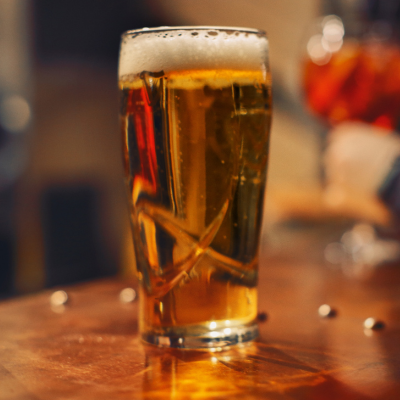
When it comes to food pairings, the effervescence and lightness of Light Lagers make them an excellent choice for dishes that are spicy, salty, or fried. Their crispness can cut through richer textures, offering a palate-cleansing experience that makes each bite feel as gratifying as the first. In particular, Light Lagers excel when paired with foods high in fat or with intense flavors, as the beer can neutralize these strong elements.
Recommended food pairings for Light Lagers include:
- Grilled seafood, such as shrimp or light fish – The lightness of these dishes complements the beer’s refreshing nature. Here’s a simple grilled fish recipe that would pair well with light beer.
- Salads with zesty dressings – The tanginess of the dressing is effectively balanced by the beer’s subtle sweetness.
- Pizza with light toppings like vegetables or chicken – The straightforward flavors harmonize well with the light lager.
- Spicy Asian cuisine – The crispness of the beer works to mitigate the heat of the spices.
- Potato-based dishes, like seasoned wedges or mashed potatoes – The beer’s effervescence offsets the starchy richness.
IPA Food Pairings
India Pale Ales, or IPAs, are renowned for their bold hop flavors, often presenting a diverse range of notes from pine and citrus to tropical fruits. These beers can vary from moderately to intensely bitter and typically boast a higher alcohol content than many other beer styles. The rich complexity and full-bodied nature of IPAs make them compelling partners for a wide variety of dishes, enhancing and elevating flavors in unexpected ways.
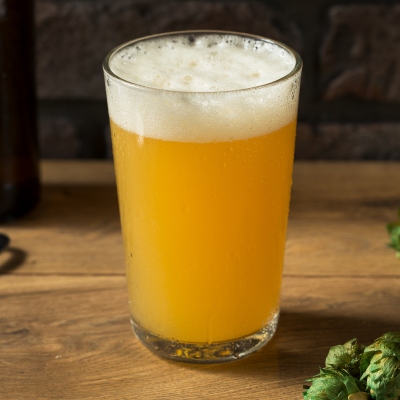
When considering food pairings, the pronounced hop bitterness in IPAs provides two key functions: it can slice through the richness of fatty foods or amplify the flavors in spicy dishes. IPAs are resilient enough to handle robust, intensely seasoned foods, making them a favorite for a wide array of cuisines. The complex hop character in an IPA can also yield delightful interactions with various spices and herbs, bringing out hidden nuances in your meal.
Recommended food pairings for IPAs include:
- Spicy Tacos – The beer’s hop bitterness effectively counterbalances the spiciness of the taco fillings.
- Charcuterie Board – The IPA’s robustness cuts through the fatty meats, offering a refreshing contrast. Learn how to make a charcuterie board.
- Strong Cheeses like Blue or Gorgonzola – The powerful flavors of these cheeses are well-matched by the assertive nature of an IPA.
- Grilled Steaks – The hearty, rich flavors in the meat find a complement in the beer’s robust profile.
- Curry Dishes – The beer’s bitterness counteracts the creamy and spicy elements, resulting in a well-rounded pairing.
Wheat Beer Food Pairings
Wheat beers like Hoegaarden are celebrated for their light, often hazy appearance and their smooth, slightly creamy mouthfeel. This style of beer frequently showcases flavor notes of banana, clove, and occasionally even bubblegum. Wheat beers are incredibly versatile when it comes to food pairings. They can gracefully accompany both light and hearty dishes without overshadowing them, thanks to their subtle fruity and spicy nuances.
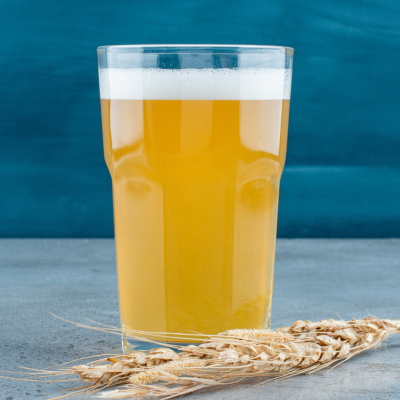
The adaptability of wheat beers makes them suitable for a broad range of culinary settings. Whether you’re enjoying a light summer salad or indulging in a hearty bratwurst, wheat beers serve as excellent palate cleansers. Their refreshing qualities can reset your taste buds between bites of strongly flavored foods, enhancing your overall dining experience.
Recommended food pairings for Wheat Beers include:
- Sushi – The beer’s effervescence and lightness harmonize with the delicate flavors of the fish. Learn how to make sushi at home.
- Chicken Caesar Salad – The beer enhances the crisp lettuce and the creamy Caesar dressing, adding a layer of complexity.
- Soft Pretzels – The saltiness of the pretzel is tempered by the smooth, creamy texture of the wheat beer.
- Fresh Fruit – The subtle fruity notes in the beer amplify the natural sweetness in fruits like melon and berries.
- Mild Cheeses such as Brie or Camembert – The cheese’s creamy texture finds a perfect match in the beer’s own smooth qualities.
Stout Food Pairings
Stouts like Guinness are robust, hearty beers that offer a rich tapestry of flavors, often characterized by notes of chocolate, coffee, and roasted barley. Unlike lighter beers, stouts provide a more complex and nuanced gastronomic experience, which makes them perfect for pairing with foods that share these qualities. Their depth of flavor and heavier body make stouts excellent companions for rich, fatty, or even sweet dishes, allowing for both complementary and contrasting pairings.
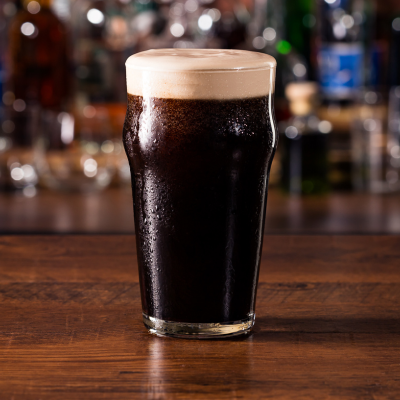
Stouts excel at pairing with foods that share their robust nature. Whether you’re indulging in a savory meat dish or a decadent dessert, a stout can enhance the experience by cutting through richness or amplifying similar flavor profiles. Their inherent coffee and chocolate undertones make them particularly good companions for foods featuring these flavors.
Recommended food pairings for Stouts include:
- Beef Stew – The hearty, meaty flavors in the stew find a cozy counterpart in the stout’s robust character. This beef stew recipe is great with a stout.
- Chocolate Cake – The rich chocolate layers in the cake harmonize wonderfully with the stout’s own chocolate undertones.
- Blue Cheese – The beer’s robust complexity can handle the potent flavors of this strong cheese, creating a balanced experience.
- BBQ Ribs – The smoky, sweet sauce of the ribs finds an equilibrium with the stout’s rich complexity.
- Oysters – This classic combination benefits from the stout’s depth, which balances the briny flavors of the oysters.
Porter Food Pairings
Porters strike a fascinating balance between robust and accessible, offering a blend of flavors such as chocolate, coffee, and caramel but in a slightly lighter body compared to stouts. This makes them a versatile choice when considering beer food pairings, as they can hold their own against a wide array of dishes without overwhelming them. While stouts often capture the spotlight for heartier pairings, the nuanced flavors and lighter body of porters should not be overlooked.
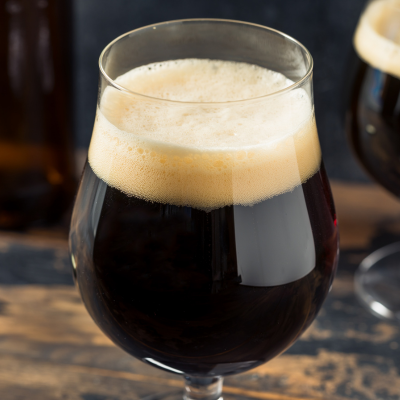
Porters are excellent for pairing because their moderate intensity can complement both savory and sweet dishes. Whether you’re dining on a hearty main course or savoring a dessert, the unique flavors in a porter can either mirror or provide a contrasting backdrop to the dish, enhancing the overall experience.
Recommended food pairings for Porters include:
- Grilled Steak – The caramelized crust on the steak matches beautifully with the porter’s roasted malty flavors.
- Mushroom Risotto – The earthy essence of mushrooms complements the coffee and chocolate notes found in many porters. Here’s a great mushroom risotto recipe.
- Dark Chocolate – The deep, rich flavors in both the chocolate and the beer create a harmonious, luxurious experience.
- Smoked Sausages – The porter elevates the smoky notes of the sausage, bringing a new depth to the dish.
- Apple Pie – The warm spices and baked apples in the pie provide a delightful contrast to the porter’s darker, roasty qualities.
Amber Ale Food Pairings
Amber Ales serve as a harmonious compromise between malt and hops, offering a balanced profile that makes them incredibly versatile for food pairings. With a malt backbone often described as toasty or biscuit-like and moderate hop bitterness, they strike a balance that’s neither too light nor too heavy. This makes Amber Ales a crowd-pleaser, both for those new to the beer scene and seasoned enthusiasts looking for a multifaceted but accessible option.
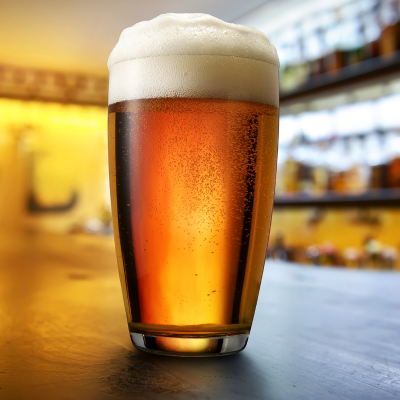
When it comes to food pairings, Amber Ales can easily flex to accommodate a wide variety of flavors. Whether you’re dining on spicy fare or looking for a beer to cut through the richness of a creamy dish, Amber Ales are up to the task. Their balanced profile makes them especially adaptable, capable of either highlighting a dish’s subtle flavors or counteracting stronger ones.
Recommended food pairings for Amber Ales include:
- BBQ Chicken – The caramel notes in the ale resonate with the sweet and smoky barbecue sauce, creating a harmonious blend.
- Veggie Burgers – The ale’s balanced nature accentuates the earthy, wholesome flavors in a veggie burger.
- Cheese Pizza – The ale’s biscuity malt character pairs well with the dough, while its hop bitterness balances the cheese.
- Lobster Roll – The ale’s subtle sweetness complements the natural sweetness of the lobster, creating a luxurious pairing.
- Caesar Salad – The hop bitterness in the ale cuts through the salad’s creamy dressing, making each bite refreshingly crisp. Learn how to make a chicken ceaser salad.
Brown Ale Food Pairings
Brown Ales are the comforting, everyman choice in the beer spectrum, offering a rich maltiness that often features complex flavor notes like chocolate, nuts, and caramel. These beers strike a balance, with flavors intricate enough to pique your interest but not so assertive that they overwhelm your palate. Because of this, Brown Ales are fantastic all-year-round beers that offer a substantial, yet non-intimidating, backdrop for a broad array of dishes.
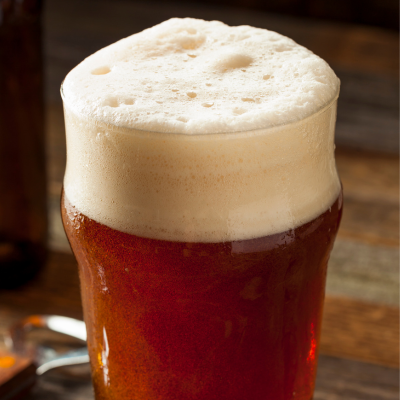
Brown Ales excel in pairing with foods that share a roasted or slightly sweet character. Their malty, often nutty, flavors make them wonderful companions for a variety of savory and sweet dishes, achieving a harmonious balance that enhances the overall dining experience.
Recommended food pairings for Brown Ales include:
- Grilled Steak – The ale’s caramel and chocolate notes harmonize with the steak’s caramelized crust, creating a full-flavored experience.
- Mushroom Risotto – The earthiness of the mushrooms finds a soulmate in the beer’s own complex, malty profile.
- Apple Pie – The ale’s undertones of caramel and perhaps a hint of spice make it a delightful match for the classic dessert.
- Smoked Sausages – The beer’s depth complements the smokiness of the sausage, resulting in a balanced, hearty pairing.
- Brie Cheese – The cheese’s creamy texture and rich flavors meld well with the beer’s layered complexity.
Sour Beer Food Pairings
Sour beers are the mavericks of the beer world, known for their sharp, tart flavors that can range from a gentle tanginess to a lip-puckering sourness. Often incorporating fruit, spices, or botanicals for additional complexity, sour beers offer a unique gastronomic experience. Their acidic character makes them exceptional partners for a myriad of foods, capable of cutting through rich, fatty textures and providing a counterbalance to both sweet and spicy flavors.
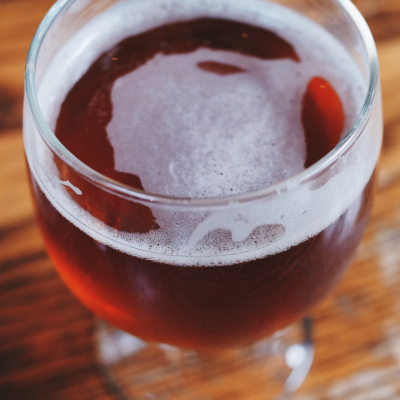
The high acidity of sour beers acts in a similar way to a splash of lemon or vinegar over food, invigorating the dish with a zest that lightens each bite. This makes sour beers extremely versatile food companions that can refresh your palate and amplify the flavors in a wide range of culinary settings.
Recommended food pairings for Sour Beers include:
- Ceviche – The beer’s tartness complements the dish’s citrus elements, elevating the fresh flavors of the seafood. Here’s a great ceviche recipe that pairs well with sour beers.
- Fried Chicken – The sour profile effortlessly cuts through the greasiness, offering a crisp contrast that resets your palate for each new bite.
- Cheesecake – The high acidity in the beer balances out the creamy richness of the cheesecake, making for an exciting sweet-and-sour experience.
- Spicy Tacos – The tartness of the beer can tame the heat, providing a refreshing juxtaposition that makes the spice more enjoyable.
- Charcuterie Board – The variety of textures and flavors on the board get a zesty boost, making each sampling feel like a new adventure.
Experimenting With Beer Food Pairing at Home
If you’ve made it this far, you should have a good understanding of beer food pairing. The next step is to experiment and try for yourself to see what the best beer food combinations are for your palate and your particular cooking style. Here are some useful tips to help you along the way as you experiment with beer food pairing at home.
Start With Something Familiar
If you’re new to pairing, then it’s best to start with a beer or dish that you are familiar with. This will help you to predict how the flavors might interact, giving you a good starting point.
For example, when I first started to pay attention to beer food pairings, I chose to try to pair a dish with Peroni as that was a beer I knew well, and I just so happened to have some in the fridge at the time. I paired it with pasta carbonara, thinking the crisp Peroni would balance the dish’s creamy richness. It worked beautifully and gave me the confidence to try more adventurous combinations.
Think About Balance
When considering a beer food pairing, aim for balance. You don’t want the beer to overpower the dish, or vice versa. For instance, a rich, hearty stew calls for a robust beer that can stand up to its strong flavors. On the other hand, lighter fare like salads or grilled vegetables would be better complemented by a crisp, lighter beer. The key is to match the intensity of the beer with the intensity of the food so that one doesn’t drown out the other.
Experiment
Trial and error is an essential part of learning the best beer food pairings. Not every combination will be a hit, but that’s completely fine. The key is to learn what resonates with your palate and cooking style. If you have the luxury of time before a special meal, consider cooking a small portion and sampling it with a variety of beers. This practice run will not only boost your confidence for the main event but also give you a good excuse to try some delicious beers.
Keep Records
Over time, it’s easy to forget how you felt about a particular food-beer combination. To help you keep track, why not take notes on your phone or keep a journal? This will not only help you remember what worked and what didn’t work, it will also help you to hone your pairing skills over time.
Beer Food Pairing Guide PDF
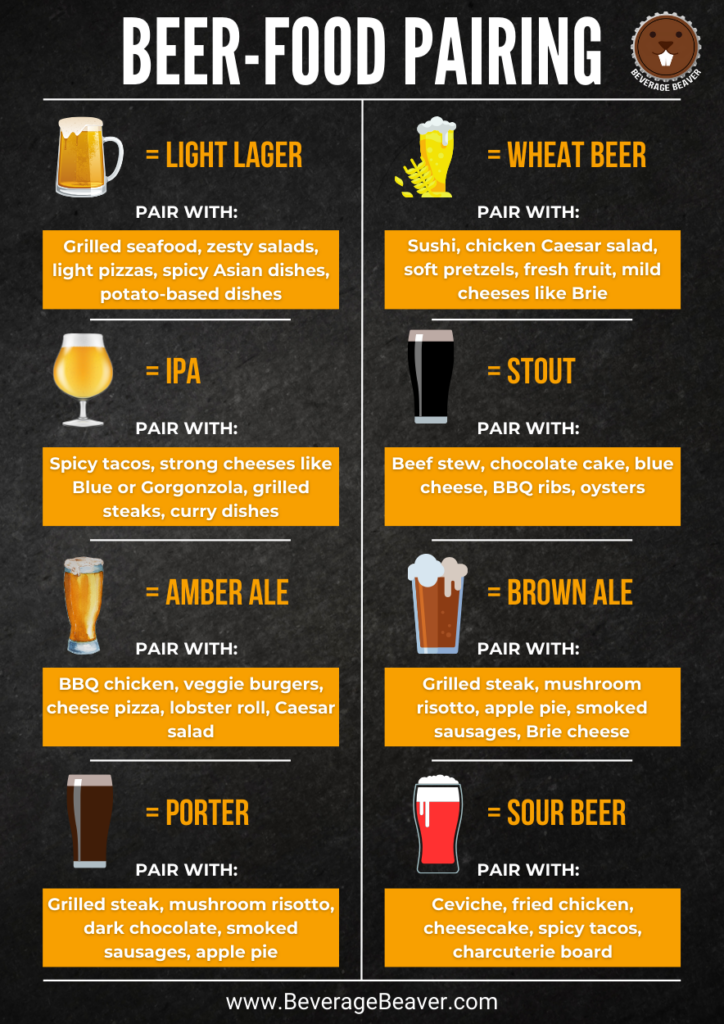
Download this easy guide to beer food pairing as a printable PDF for easy referencing in the future.
Wrapping Up
If you’ve made it this far, then you should have a good understanding of how to pair beer with food. Well done! Remember, these are just guidelines, and the best beer food combinations come from experimenting. So, don’t hesitate to think outside the box and try new combinations that intrigue you. Your palate is unique, and you may discover pairings that are personally delightful, even if they stray from the conventional beer food pairing guidelines.

